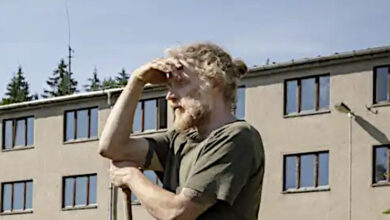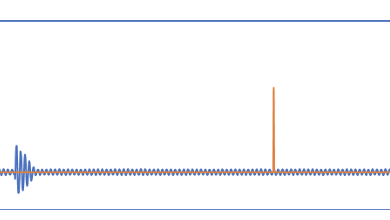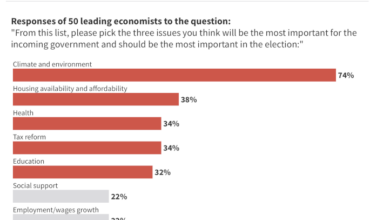15 minutes | Climate Etc.

by Judith Curry
In a recent invited talk at the American Chemical Society annual meeting, I attempted to explain the climate debate in 15 minutes.
This talk was given in a session on sustainability. Other invited speakers included James Green (NASA Chief Scientist), Marilyn Brown (Georgia Tech) . Our talks were followed by a panel discussion. This was an extremely interesting session, but was not recorded owing to an ACS glitch (you can read the abstracts at the link above).
My presentation slides can be downloaded [here].
Ok, with the new word press editor, no idea how the ppt file will show up. Below is the text of my remarks.
Slide 2 IPCC
The climate crisis can be summarized as:
- Its warming
- The warming is caused by us
- Warming is dangerous
- We need to urgently transition to renewable energy to stop the warming
- Once we stop burning fossil fuels, sea level rise will stop and the weather won’t be so extreme
A few weeks ago, the Intergovernmetal Panel on Climate Change, or IPCC, issued its 6th Assessment report. In response, the secretary general of the UN stated that
“This is code red for humanity.”
Slide 3 what’s wrong with this narrative
In my talk today, I’m going to present you with a different perspective on the climate change problem and how we can approach solutions.
So what’s wrong with the crisis narrative? It is my assessment that
- We’ve vastly oversimplified both the problem and its solutions
- The complexity and uncertainty surrounding climate change is being kept away from the public and policy debates.
- Rapid reductions in emissions are technologically and politically infeasible on a global scale
- And it overemphasizes the role of climate change in societal problems, distracting from real solutions to them.
Slide 4 97% consensus
Even people that don’t know much about climate science have heard that 97% of climate scientists agree. But exactly what do they agree on? Not nearly as much as is portrayed in the media. Everyone agrees that:
- Surface temperatures have increased since 1880
- Humans are adding carbon dioxide to the atmosphere, and
- Carbon Dioxide and other greenhouse gases have a warming effect on the planet
However, there is disagreement on the most consequential issues:
- How much of the recent warming has been caused by humans
- How much the planet will warm in the 21st century
- Whether warming is ‘dangerous’
- And how we should respond to the warming, to improve human well being
Slide 5 21st century warming
For policy making, the most consequential issue is how much warming we can expect in the 21st century. This figure from the latest IPCC report shows climate model simulations of global surface temperature anomalies over the 21st century. There’s a large range of warming shown in this diagram, from 1.5 to more than 4 degrees centigrade above pre-industrial temperatures. We’ve already warmed by about 1 degree centigrade, so whether the future warming is on the low or high end has huge implications for climate policy. The largest amount of warming is associated with an extreme emissions scenario, SSP-8.5.
These simulations should not be regarded as predictions for the following reasons:
- First, and most importantly, the IPCC does not include future scenarios of natural climate variability. These include solar variability, volcanic eruptions and multi-decadal ocean circulation patterns.
- Second, the IPCC does not assess the plausibility of the different emissions scenarios
Slide 6 Emissions scenarios
There are two primary factors that contribute to this large range of temperatures for the 21st century. The first is the emissions scenarios, which determine how much CO2 is added to the atmosphere, these are indicated by the SSPs. The second factor is the sensitivity of warming to a given amount of added CO2.
On the previous slide, recall that the largest amount of warming was associated with the emissions scenario SSP-8.5. The IPCC 5th Assessment Report regarded the 8.5 scenario to be our most likely future, and it was referred to as the business-as-usual scenario.
However, its becoming increasingly apparent that the 8.5 scenarios are implausibly high. The two lines at the bottom of this figure show projections of emissions made by the International Energy Agency out to 2040. The higher projection shows the expected emissions based on current policies, and the lower projection is based on current commitments under the Paris Agreement. Both of these show fairly steady emissions through 2040, that are much lower than the 8.5 scenarios.
Nevertheless, the most recent IPCC report emphasizes the 8.5 scenario. Not surprisingly, this extreme emissions scenario is the source of alarming impacts.
—-
The second major source of uncertainty is the sensitivity of the global temperatures to a doubling of CO2. For decades, the likely range for climate sensitivity has been between 1.5 and 4.5 degrees centigrade, which is reflected by the assessment from the IPCC AR5 published in 2013.
The red bars in this figure shows the range of climate sensitivity from the most recent climate model simulations. The sensitivity values range from 1.8 to 5.7 degrees, and overall are much higher than those from the AR5, whose highest value was 4.6 degrees
The IPCC AR6 substantially narrowed the likely range of climate sensitivity to between 2.5 and 4 degrees, rejecting the highest values from the climate models. However this narrowing of the range is disputed, particularly on the low end. The whole issue of climate sensitivity to CO2 remains unsettled, with a high level of uncertainty.
The bottom line here is some good news. The extreme tail risks from global warming, associated with very high emissions and high climate sensitivity, have shrunk and are now regarded as unlikely if not implausible.
Slide 7 Is warming dangerous
The next area of disagreement takes us away from science and into the realm of values. How dangerous is global warming? The IPCC 5th Assessment Report used a burning embers diagram to portray reasons for concern. The level of concern increases with the amount of global warming. Note that the IPCC does not use the words ‘dangerous’, ‘crisis’ or ‘catastrophe’ in its report; rather it uses ‘reasons for concern.’
Any evaluation of dangerous climate change must confront the Goldilocks principle. Exactly which climate state is too hot versus too cold? Some answer this question by stating that the climate we’re adapted to is ‘just right’. However, the IPCC uses a preindustrial baseline, in the late 1700’s. Why anyone thinks that this is an ideal climate is beyond me. This was during the Little Ice Age, the coldest period of the millennia. Think George Washington and the horrible winters at Valley forge.
While the categories of concern in the burning embers diagram seem a bit nebulous, the 6th assessment report focused on extreme weather and climate events. Lets take a look.
Slide 8 Extreme events
The recent IPCC report did not detect any global trends in flooding, meteorological or hydrological drought, winter storms or tornadoes. Trends were identified in heat waves, heavy rainfall events and fire weather.
The report concluded that it is likely that the global proportion of major hurricanes has increased over the last four decades. Global hurricane data supports this conclusion. However, there’s a large amount of natural variability in hurricane activity.
The diagram on the left shows the number of major hurricanes that have struck the U.S. since 1900. The year 2005 stands out as the highest, which was followed by a period of 11 years with no major hurricane landfalls. Also, there were a large number of major hurricane landfalls during the first half of the 20th century, when surface temperatures were significantly cooler
The large amount of natural variability makes it difficult to identify meaningful trends, and even more difficult to attribute any trend to manmade global warming.
The right hand side shows US heat waves, which have been the big climate story this past summer. As the global average temperature increases, it makes sense that heat extremes would increase and cold extremes would decrease. However, reality isn’t so simple. This figure from the EPA shows that heat waves in the 1930’s were horrendous and much worse than in recent decades, even though the average global temperature was significantly lower in the 1930’s.
An important issue is the mortality associated with heat events. Numerous studies have found that there are more deaths from cold events than from heat events, by as much as an order of magnitude. The inescapable conclusion is that more warming leads to fewer deaths from temperature extremes. So which would Goldilocks prefer?
Slide 9 Adapting
So far, the world has done a decent job at adapting to weather extremes climate change. The upper left figure shows the change in yield for major crops, with yields for many crops doubling or even quadrupling since 1960.
The figure in the lower left shows losses from global weather disasters as a percent of GDP. The spikes are associated with years that showed large losses from tropical cyclones. Overall for the past 30 years, there has actually been a slight decline in losses.
The diagram in the lower right shows the number of deaths per million people from weather and climate catastrophes. The large numbers early in the 20th century were mostly associated with tropical cyclone landfalls in south Asia. Over the past century, climate related deaths have dropped 97%.
Slide 10 urgently reduce emissions
Under the auspices of the UN Framework Convention on Climate Change, the world is attempting to reach netzero in carbon emissions by 2050. I refer to this as Plan A.
Using the precautionary principle, Plan A is based on the premise that rapidly reducing CO2 emissions is critical for preventing future dangerous warming of the climate.
The other side of the policy debate rejects the urgency of reducing emissions. They argue that any near term reduction in warming would be minimal and at high cost. An effective strategy requires global reduction in emissions, which is highly unlikely for developing countries.
They argue that its best to focus on keeping economies strong and making sure that everyone has access to energy. And finally, the argument is made that there are other more pressing problems than climate change that need to be addressed with the available resources.
Slide 11 Emissions
In spite of the numerous UN treaties and agreements to reduce emissions, the atmospheric CO2 concentration relentlessly continues to increase
The challenge to getting to netzero by 2050 is illustrated by this diagram from the International Energy Agency. This figure shows the pathways for emissions reductions that the major economies need to take to reach netzero by 2050. Europe and the US have already turned the corner, but they still have a very steep path to netzero. By 2050, global emissions will be dominated by whatever China and India have done, or have failed to do.
The IEA roadmap finds that there is a possible but very narrow pathway to netzero by 2050, provided that there’s a huge leap in energy innovation and major efforts to build new infrastructure. Others find that reaching netzero by 2050 is a social and technological impossibility.
Slide 12 Wicked mess
How did we come to the point where we’re alleged to have a future crisis on our hands, but the primary solution of rapid global emissions reductions is deemed to be impossible? The source of this conundrum is that we have mischaracterized climate change as a tame problem, with a simple solution. Climate change is better characterized as a wicked mess. A wicked problem is complex with dimensions that are difficult to define and changing with time. A mess is characterized by resistance to change and contradictory and suboptimal solutions that create additional problems.
In decision making, a problem is associated with deep uncertainty if prediction models are inadequate, there is heavy reliance on subjective judgment, and there is disagreement on desirable alternative outcomes.
For such situations, treating a problem as if its tame can result in a situation where the cure is not only ineffective, but worse than the disease.
We clearly need a Plan B, that broadens the climate policy envelope. By considering climate change as a wicked mess, climate change can be reframed as a predicament for actively reimagining human life. Such a narrative can expand our imaginative capacity and animate political action while managing social losses.
Slide 13 pragmatism
Here’s a framework for how we can get to a Plan B.
In addressing the climate change problem, we need to remind ourselves that climate isn’t an end in itself, and that climate change isn’t the only problem that the world is facing. The objective should be to improve human wellbeing in the 21st century, while protecting the environment as much as we can. Climate-informed decision making that focuses on food, energy, water and ecosystems will support human wellbeing in the coming decades.
We need to recognize that how the climate of the 21st century will play out is a topic of deep uncertainty. Once natural climate variability is accounted for, it may turn out to be relatively benign. Or we may be faced with unanticipated surprises.
Alarmism about climate change misleads us and panic makes us less likely to tackle climate change smartly.
A more pragmatic approach to dealing with climate change drops the timelines and emissions targets, in favor of accelerating energy innovation. Whether or not we manage to drastically curtail our carbon dioxide emissions in the coming decades, we need to reduce our vulnerability to extreme weather and climate events.
So what does a plan B look like? Local solutions that secure the common interest can avoid political gridlock. There are a lot of relatively small things that we can do to reduce atmospheric CO2 and other greenhouse gases, that have justifications independent of climate mitigation. Individual countries and states can serve as laboratories for solutions to their local environmental problems and climate-related risks.
Progress can be made on a number of fronts related to land use, forest management, agriculture, water resource management, waste management, among many others. Human wellbeing will be improved as a result of these efforts, whether or not climate change turns out to be a huge problem and whether or not we manage to drastically reduce our emissions.
Slide 14
Encroachment of politics into socially-relevant science is unavoidable. Problems arise from many sources, and scientists, policy makers and the media are all culpable. The issue of greatest concern to me is when scientists filter research results and their public statements of facts with an eye to downstream political use. Governments exacerbate this by funding a narrow range of projects that support their preferred policies.
Climate science is far from the only area of science that has been politicized. Others include COVID19, gender studies, genetically modified food. Cancel culture is alive and well in the sciences, where scientists that disagree with an interpretation that supports desired policy objectives are ostracized, with some even losing their jobs.
Slide 15 Personal statement
In conclusion, a personal statement. I regard my job as a scientist to critically evaluate evidence and to challenge and reassess conclusions drawn from the evidence. While I regard manmade climate change as a cause for concern, I do not view this as a crisis or an apocalypse.
This perspective has placed me at odds with the activist branch of the climate science community, who regard my perspective as inconvenient. The academic political pressures from activist scientists and even politicians caused me to retire prematurely from my tenured faculty position.
I’m now working in the private sector, helping businesses to understand and manage their weather and climate related risks.
I am also active in engaging with policy makers and the public. I have a blog Climate Etc. that provides a forum for scientists and the interested public to engage in discussion on topics related to climate science and the science-policy interface.
JC remarks
Well its been awhile since I’ve had an invited talk in a mainstream academic venue. 15 minutes is longer than 5 minutes, but this is still alot of territory to cover. This is the first thing I’ve written publicly on the IPCC AR6. I have been crazy busy for months, currently exacerbated by hurricanes.
I do have some material in the pipeline for blog posts, i will try hard not to let two weeks pass between posts.




